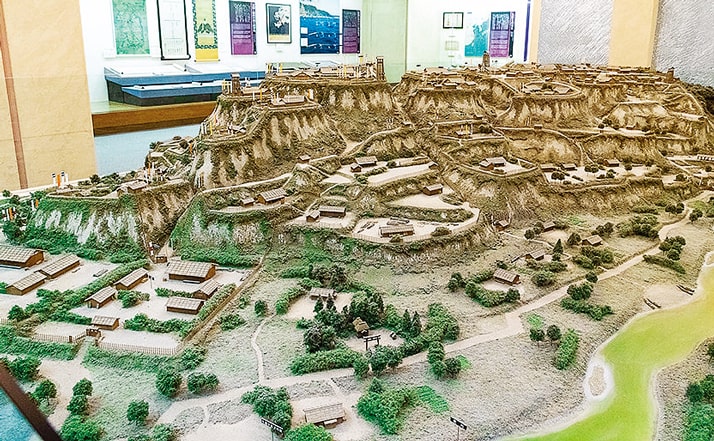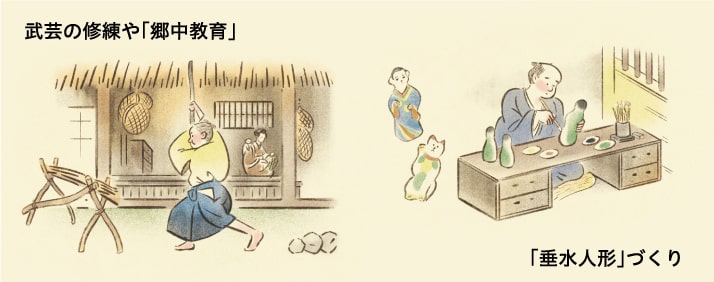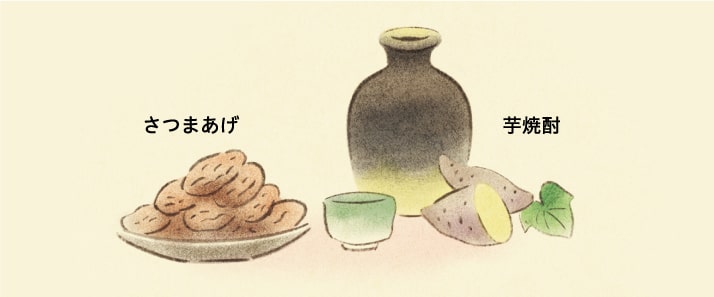Construction of Fumoto
Fumoto were constructed at strategic locations close to the medieval forts employed by the Shimadzu clan and had good access to routes across land and sea. The towns were laid out with the manor lord’s residence in the middle, and samurai houses forming a perimeter. The samurai houses had defensive features such stone walls, tall hedges, and sometimes moats. Each house also had an entrance gate fitting of the owner’s samurai status. The towns were located close to canals or rivers in order to strengthen defensive capability.

The Life of Satsuma Samurai
The samurai living at Fumoto would spend their days working on regional administration and practicing the martial arts. The Satsuma domain had a much larger ratio of warriors than other domains (26% compared to the national average of 7%) and regional samurai needed to farm within the grounds of their residences to sustain themselves. Some samurai also supplemented their income by making washi paper, clay dolls, or blacksmithing, and their workmanship has left a direct influence on the traditional arts and crafts remaining in Kagoshima today. After a hard day of practicing martial arts and working the land, the samurai would relax in the evening and enjoy deep-fried fish cakes called Satsuma-age and local distilled spirit shochu. Both are still a local delicacy and are much loved by the people of Kagoshima today.


94 Shochu
95 Satsuma-age


